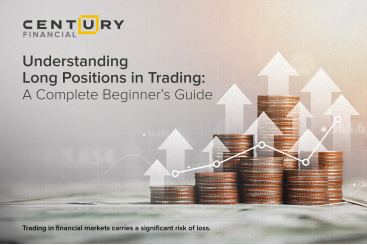Wednesday, October 26, 2022
Women and Investing: Debunk the 3 myths
تم إعداد هذا المنشور من قبل سنشري للاستشارات


The top three marketed myths on women and investing:
- Women are too timid to invest
- Women are risk averse
- Women are not confident
It’s time to get the facts right!
Instead, investing like a woman means:
- Investing with research and due diligence
- Investing cautiously
- Investing while being risk aware
Women are making significant strides in every sector. However, there’s an untold bias when women and investing come together.
It is still widely perceived that women are not good with investing, are timid to manage their finances independently, they are risk-averse, when compared to their male counterparts.
Why the gender investment gap? A backdrop
.png)
As per the U.S. Census Bureau, in 2020, women made 83 cents for every dollar earned by men.
The gender pay gap has been much publicized, but the focus should now come to gender investment gap, as women are going to be in control of more financial assets.
Women control more than $10 trillion (about 33%) of total U.S. household financial assets. This is set to hit $30 trillion by the end of the decade, as women take hold of unprecedented financial assets over time.
Moreover, as a cohort, women tend to live longer, earn less, and have less direct experience, and exposure with financial planning. Also, they take breaks from career to take care of family members, more often, when compared to men.
This results in women spending fewer years in the workforce, contributing less to investment, and ultimately, having less savings for a nest egg.
Thereby, to ensure their financial wellbeing and have choices in life, women must have equal opportunity to invest.
Bridging the wage and employment gaps gradually would bring more financial equality between men and women, ensuring that women have an equal opportunity to invest.
Despite the challenges, women outperform
As the world continues to embrace the intelligence of a woman, facts defy the existing taboo associated with women and investing.
In fact, pandemic was capitalized by women as an opportunity for putting their money to work.
According to the key findings from Fidelity Investments’ 2021 Women and Investing Study, 50% of women say they are more interested in investing since the start of the pandemic, while 42% say they now have more to invest since the start of the pandemic.
Further, the study shows that when women do invest, they appear to be better positioned for success, outperforming male investors by an average of 40 basis points, or 0.4%.
Another study by Warwick Business School, sponsored by Barclays, found female investors outperformed males by a wider margin — 1.2%.
Given the enticing data, it is evident that women are working their best to challenge the stereotypes in investing, as well.
Fact #1: Women are risk aware
A very negative viewpoint marketed is that women are risk averse. However, “averse” must be switched to “aware.” Women’s risk awareness mindset is, in fact, a boon and an incredibly positive skill.
It keeps many of women from making the mistakes that many men often make, for example, chasing the hot stock, or investing too much money in a single idea.
The book titled aptly “Warren Buffett Invests Like a Girl” by LouAnn Lofton, describes that women are often better long-term investors.
.png)
Surveys have revealed that women prefer to buy and hold, maintain balanced portfolio, remain calm during market swings, what forms the very essence of value investing.
Fact #2: Women ask for directions in investing
A 2018 FINRA report reveals that “Women may answer ‘Don’t know’ more often when surveyed.”
This could either imply that women are more open to assistance, or maybe men being overconfident while self-reporting.
Investing is a personal decision. Some investors prefer to have a second opinion and a bit more handholding, while some prefer no interference, and do their own research. We must avoid stereotyping the investing methodologies.
Moreover, there are numerous education resources, more than ever, to help both women and men learn about smart investing strategies. Educating oneself helps brings more comfort with investments. Further, technology is helping us bridge the gap with easier access to online trading platforms.
Fact #3: Women are cautious investors
Female investors carefully test the waters before taking a decision, which must not be viewed as less confident or less competent.
LouAnn Lofton, the author of “Warren Buffett Invests Like a Girl,” believes that women are more likely to have a calm temperament. Like Buffett, women tend to invest with a longer-term outlook. Women do more research and due diligence, trade less often, and remain calm and steady under pressure.

As female investors tend to buy and hold, it reduces online trading costs and could result in higher returns. Meanwhile, men place trade orders more frequently and are statistically more likely to be overconfident considering their ability to beat the market.
A study from Vanguard that observed the 2008 market fall and the movements in IRAs, found that men were more likely to panic and sell at the bottom — marking a precisely wrong time.
Hence, in the world of investing, it’s always better to be less confident or more cautious, rather than being over-confident.
Concluding words
Financial discipline is a good thing, bearing in mind that women are emerging as the new face of wealth and asset management. The percentage of women directors across the boards of S&P 500 companies hit an all-time high of 30%.
Despite the achievements, women tend to judge themselves as less confident in their financial skills. However, it must be noted that confidence that outdoes skill could mislead people to overlook important research and prompt them to take on too much risk.
لا تقدم شركة سنشري للإستشارات والتحليل المالي ش.ذ.م.م (الشركة) محتوى هذه المدونة، بما في ذلك أي أبحاث أو تحليلات أو آراء أو توقعات أو أي معلومات أخرى (يُشار إليها مجتمعةً باسم "المعلومات")، إلا لأغراض التسويق والتثقيف وإتاحة المعلومات العامة. ولا يُفسَّر ذلك على أنه نصيحة استثمارية أو توصية أو دعوة لشراء أو بيع أي أدوات مالية.
كما يجوز نشر هذه المعلومات عبر قنوات مختلفة، بما في ذلك موقع الشركة الإلكتروني، ومنصات الغير، والنشرات الإخبارية، والمواد التسويقية، ورسائل البريد الإلكتروني، ووسائل التواصل الاجتماعي، وتطبيقات المراسلة، والندوات الإلكترونية، وغيرها من وسائل التواصل. وبينما تسعى الشركة لضمان دقة المحتوى، فإنها لا تضمن اكتماله أو موثوقيته أو تحديثه في الوقت المناسب. وعليه، فأي قرارات تُتخذ بناءً على هذه المعلومات تكون على مسؤوليتك الشخصية. ولا تتحمل الشركة أي مسؤولية عن أي خسارة أو ضرر ناتج عن استخدامها.
ينطوي تداول المنتجات المالية على مخاطر كبيرة، بما لا يتناسب مع جميع المستثمرين. فيُرجى التأكد من وعيك التام بالمخاطر، وطلب الاستشارة المهنية المتخصصة إذا لزم الأمر.
يُرجى الاطلاع على بيان كشف المخاطر الشامل المتوفر على موقعنا الإلكتروني.
















